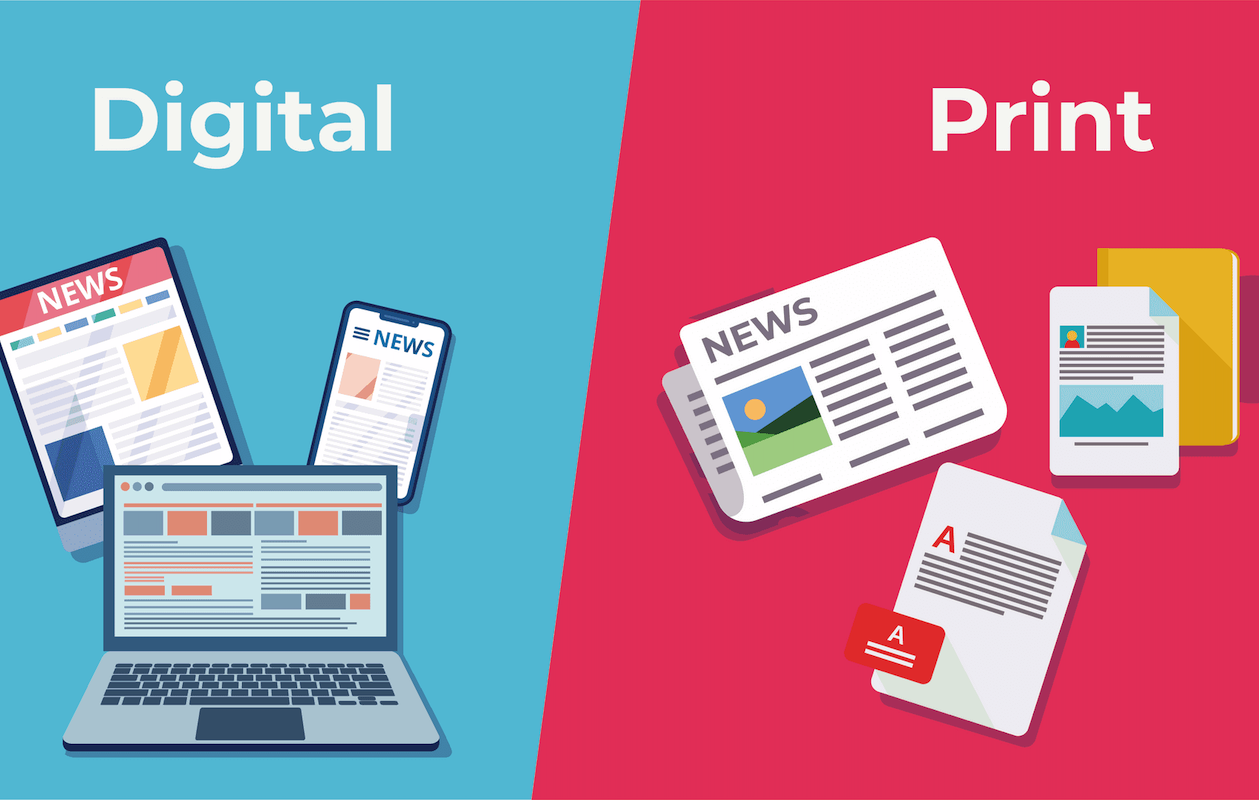Print vs. Digital: Choosing the Right Medium for Your Marketing Materials
In today's digital age, marketers have a plethora of options when it comes to distributing marketing materials. Print and digital mediums each offer unique advantages and cater to different audience preferences and marketing objectives. Understanding the strengths and considerations of each medium is essential for making informed decisions that maximize impact and engagement. This article delves into the distinctions between print and digital marketing materials, guiding marketers through the decision-making process to select the most effective medium for their campaigns.
Print Marketing Materials
Print marketing materials have long been a cornerstone of traditional marketing strategies, offering tangible, physical assets that engage the senses and leave a lasting impression. Key characteristics of print materials include:
- Tangibility: Print materials such as brochures, flyers, posters, and business cards provide a tactile experience that enhances brand perception and memorability.
- Credibility: Print is often perceived as more trustworthy and authoritative, particularly among older demographics who value physicality and permanence.
- Targeting Specific Audiences: Print allows for targeted distribution to specific geographic locations or niche markets, making it ideal for local businesses or targeted campaigns.
Advantages of Print Marketing:
- Brand Recognition: Well-designed print materials can strengthen brand recognition through consistent use of colors, fonts, and imagery.
- High Engagement: Physical materials can capture attention and encourage interaction, leading to higher engagement and response rates compared to digital ads.
- Longevity: Print materials can have a longer shelf life, remaining in circulation for extended periods and providing ongoing exposure.
Digital Marketing Materials
In contrast, digital marketing materials leverage online platforms and technologies to reach a broader audience instantly and interactively. Digital materials include:
- Websites: Digital storefronts that showcase products/services and provide essential information to customers.
- Social Media: Platforms like Facebook, Instagram, and LinkedIn allow businesses to connect directly with their audience through targeted ads, posts, and stories.
- Email Campaigns: Personalized email marketing campaigns deliver tailored messages directly to recipients' inboxes, fostering engagement and driving conversions.
Advantages of Digital Marketing:
- Reach and Accessibility: Digital materials can reach a global audience instantly, breaking geographical barriers and enabling businesses to scale quickly.
- Interactivity: Digital platforms offer interactive features such as clickable links, videos, animations, and feedback forms that encourage user engagement and interaction.
- Analytics and Tracking: Digital campaigns provide real-time analytics and tracking tools to measure campaign performance, ROI, and customer behavior.
Choosing the Right Medium
Selecting between print and digital mediums depends on several factors, including target audience demographics, campaign objectives, budget considerations, and brand identity. Consider the following when making your decision:
1. Audience Preferences:
Understand where your target audience spends their time and how they prefer to consume information. Older demographics may respond better to print materials, while younger audiences are more digitally savvy.
2. Campaign Goals:
Define your campaign goals—whether it's increasing brand awareness, generating leads, driving online sales, or enhancing customer engagement. Each medium has strengths that align with specific objectives.
3. Budget and Resources:
Evaluate your budget constraints and resource availability. Print materials may require upfront printing costs and distribution logistics, while digital campaigns may involve digital ad spend and content creation expenses.
4. Integration and Consistency:
Consider how your chosen medium integrates with your overall marketing strategy and brand consistency. Ensure that design elements, messaging, and brand identity are cohesive across all channels.
5. Measure Effectiveness:
Implement tracking mechanisms to measure the effectiveness of your campaign. Monitor metrics such as conversion rates, click-through rates (CTR), engagement levels, and return on investment (ROI) to optimize future strategies.
The choice between print and digital marketing materials hinges on understanding your audience, aligning with campaign goals, and leveraging the unique advantages of each medium. By assessing audience preferences, campaign objectives, budget considerations, and integration with overall marketing strategies, marketers can make informed decisions that maximize impact and drive success. Whether opting for the tangible appeal of print or the dynamic reach of digital, strategic planning and execution are key to achieving effective marketing outcomes in today's diverse and competitive landscape.






































